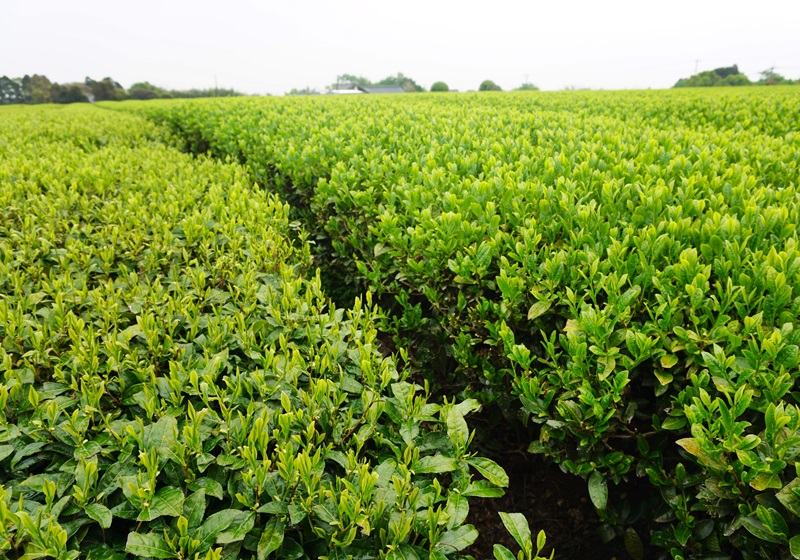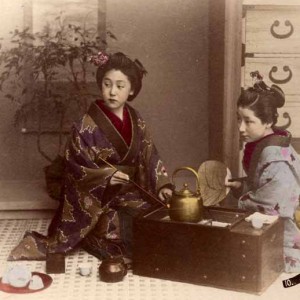Traditional Japanese top green tea is Uji green tea Japanese green tea why is broken how to drink?
Steamed green tea, steamed green tea
Origin: Kyoto, Japan
Yulu, also known as Yulu, is the name of a special quality of steamed green tea (fried tea) in Japan, which comes from Yuji in southern Kyoto. This class has different levels of quality. The producers named them poetically rather than numbers, such as cranes, pines, Ziyun, etc.
Production area
At present, Yuji, Shizuoka Prefecture and Fukuoka Prefecture are the main producing areas in Japan. Companions and Yame (eight women) compete in Fukuoka to be the best area in different ways. The products also take place in Zhejiang and Sichuan's domestic Japanese market and export market in China.
In this article, we will introduce one of the best Japanese cuisine from Yuji and discuss how to best enjoy it from a taste and health point of view. Before that, we need to readjust some concepts in order to better understand this special green tea.
A kind of steamed green tea
First of all, green tea has four subcategories, and steamed green tea, which is regarded as Japanese tea by most people, is one of them.
Secondly, in addition to steaming tea, there are other ways to make tea in Japan. Baking and making semi-fermented tea (unlike oolong tea) is part of this, which we will cover in other articles.
Third, there are other varieties of steamed green tea, such as Japanese Mocheng matcha tea, and Emei Maofeng, a traditional whole-leaf tea from Sichuan, China. All in all, Yuhong is a high-quality green tea variety, which is produced by special steaming technology. Due to different producing areas and production styles, its quality has different levels and subtle differences.

Origin
Some historians may disagree with me and believe that the real origin of tea in Japan (1) should be Togano-o Zen tea planted from the Chinese seed of the Reverend Eisai (aka Yousai) 1210 (2), and he also wrote the first book about tea in Japan "Health through Tea drinking (Kissa-yojo-ki)" (3).
However, the tea he produces is very different from fried tea or the more developed fried tea we have today.
Foreign culture on the road of local development
With the change of cultural, economic and social conditions, the production of tea is also developing. By the 17th century, the loose-leaf tea technology and literati culture of the Ming Dynasty in China took root in Yuzhi area south of Kyoto, which has developed into the central area of tea and culture since the Eisai era. In 1738, the local manufacturer Sohen Nagatani developed the process of fried tea on the basis of steamed tea and rolled tea (a loose-leaf form). A century later, Japanese fried tea is considered to be a more valuable fried tea, which is only produced in Yuji. Meanwhile, great changes are taking place in this country. The spirit of Meiji modernization later ruled Japan, and by 1884, when machines began to be invented for tea processing, traditional quality was quickly replaced by automation.
Today, even in Yuzhi, few producers make grilled fish in the traditional way. The remaining few people in the country charge extra fees for it.
What we are reviewing is a better machine manufacturing quality, the best available on the market, without exclusive or special channels, produced by one of Yuzhi's most famous gardens.
Taste
Most brands and gardens usually recommend that you make tea at a very low water temperature (mostly between 40 °C and 60 °C). Somehow, the Japanese have such a feeling: the lower the temperature, the better the tea.

A different method of brewing
I can hardly agree. Especially in cold weather, the heat loss of the teapot can be very rapid, and even the one-minute brewing time usually recommended by the manufacturer means that when the tea is warm, no matter how good you preheat the teapot and cup. Because of the price of tea and the much higher ratio of tea to water, it is practical and impossible to make tea in a large teapot.
The reason for low temperature recommendation is that the lower the temperature, the less catechins dissolve in water, and some catechins can cause bitterness and astringency. For those who don't like the bitterness in tea, this may be a solution. However, even if there is a rich salty taste of Japanese tea, it is too easy without a good comprehensive and balanced bitterness and water temperature to set off the aroma. This is especially true for most varieties of green tea, including Japanese tea. Preheat your small pot. According to the ratio of high leaves to water, most brands recommend 8 grams to 100 milliliters of water, but do not use water less than 65 °C and soak for at least 1.5 minutes (30 seconds to 1.5 minutes is recommended). A good high-density Yixing pot can suppress the bitterness, while the porcelain pot can aggravate the bitterness.
The delicious taste
A delicate crab roe brews a thick lime green wine with warm aromas reminiscent of roasted seaweed and roasted nuts. It tastes salty, with the taste of sea salt and roasted vegetables. This "fresh taste", now known as salty, is due to the fact that the growth time of shade before picking increases the level of amino acids in tea.
Unlike whole-leaf tea, broken-leaf tea produces mostly turbid wine, especially crab roe. Another problem with these soft broken leaves is that they stick to the inside of the spout of the teapot and can easily clog, especially those with built-in filters. One way is to use an advocate or advocate bag, such as generally available in Japanese stores, but to keep the best injection results of expensive tea, the best solution may be to use a pot of wide inner slotting to allow leaves to pour, cups and a filter.
Important Notice :
前街咖啡 FrontStreet Coffee has moved to new addredd:
FrontStreet Coffee Address: 315,Donghua East Road,GuangZhou
Tel:020 38364473
- Prev

How many hours does sedentary usually mean? The new efficacy of drinking fine black coffee reduces the risk of stroke
I believe that most of the urban beauties and handsome men here are ruthless diners who can't afford to sit for a long time. In the past two days, there has even been a hot search on Weibo that "sitting for eight hours a day without exercise increases the risk of stroke by seven times." As proletarian strivers who fall in love with their work every day, they drag their tired bodies home from work to lie down and have fun brushing sand sculpture videos, and then think about it.
- Next

Flavor characteristics of Zhengshan race black tea Zhengshan race is high-grade tea recommended by ten famous brands
What is a race? In the West, there is a traditional misunderstanding of the word race, which is regarded as a kind of tea variety with thick leaves or large leaves. As a result, the West continues to use the term as one of the grades based on leaf size or appearance, although it is not often used now. The original meaning of the word race is just the opposite: leaflet variety. It actually refers to a kind of area in Fujian that has existed since 1717.
Related
- The milk tea cup becomes smaller?! Overlord Tea Girl launches a new "Return to Yunnan" series
- Accused of selling counterfeit and high-priced coffee beans! Well-known boutique coffee brand "Oukelao" bowed and apologized!
- How to make espresso dumplings? Can I eat coffee and glutinous rice balls together?
- Save the unformed and stagnant powder cakes in one second! What is the problem with stagnant water in the powder bowl of the espresso machine?
- What does hand-brewed coffee stop mean? Why is it not recommended to make coffee by hand?
- Is it normal to smell like coffee? Why does coffee smell like alcohol? What's wrong with the strong smell of cold extract ice dripping ice brewed coffee?
- How to solve the problem that hand-brewed coffee extraction takes too long? Why is the water flowing so slowly when making coffee?
- The main points of making Australian white coffee, the proportion details, how does Australian white properly foam and blend the flowers?
- Can ice water make cold extract coffee? What is the difference between room temperature water and ice water for making cold coffee?
- What milk is best for making latte and white Dirty coffee? What is the difference between different brands of fresh milk and pure milk for making coffee?

